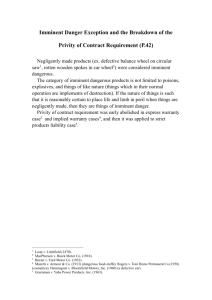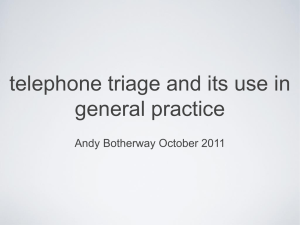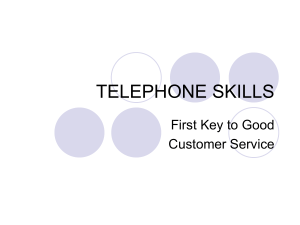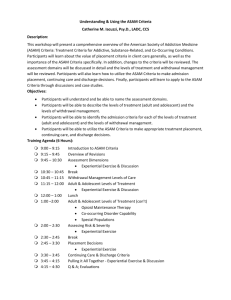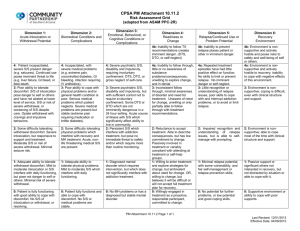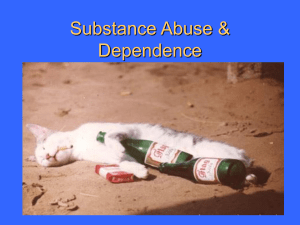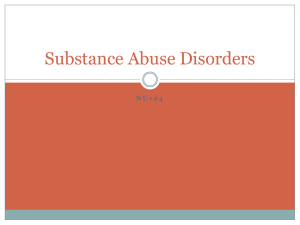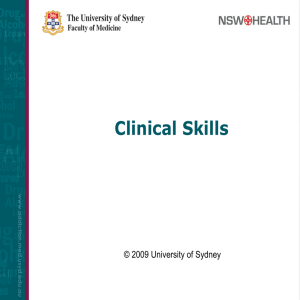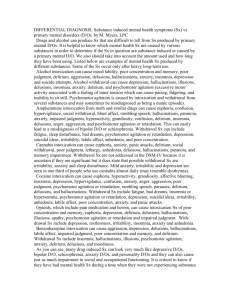Five Minute ASAM Assessment
advertisement
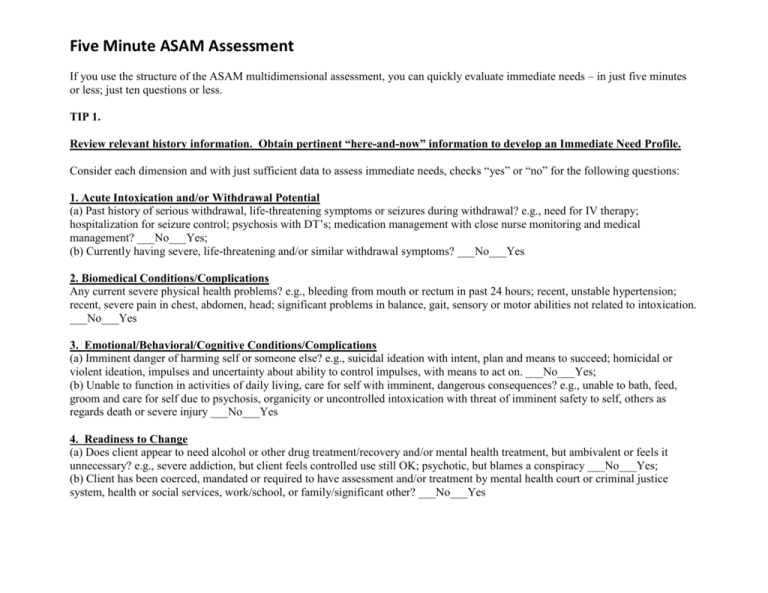
Five Minute ASAM Assessment If you use the structure of the ASAM multidimensional assessment, you can quickly evaluate immediate needs – in just five minutes or less; just ten questions or less. TIP 1. Review relevant history information. Obtain pertinent “here-and-now” information to develop an Immediate Need Profile. Consider each dimension and with just sufficient data to assess immediate needs, checks “yes” or “no” for the following questions: 1. Acute Intoxication and/or Withdrawal Potential (a) Past history of serious withdrawal, life-threatening symptoms or seizures during withdrawal? e.g., need for IV therapy; hospitalization for seizure control; psychosis with DT’s; medication management with close nurse monitoring and medical management? ___No___Yes; (b) Currently having severe, life-threatening and/or similar withdrawal symptoms? ___No___Yes 2. Biomedical Conditions/Complications Any current severe physical health problems? e.g., bleeding from mouth or rectum in past 24 hours; recent, unstable hypertension; recent, severe pain in chest, abdomen, head; significant problems in balance, gait, sensory or motor abilities not related to intoxication. ___No___Yes 3. Emotional/Behavioral/Cognitive Conditions/Complications (a) Imminent danger of harming self or someone else? e.g., suicidal ideation with intent, plan and means to succeed; homicidal or violent ideation, impulses and uncertainty about ability to control impulses, with means to act on. ___No___Yes; (b) Unable to function in activities of daily living, care for self with imminent, dangerous consequences? e.g., unable to bath, feed, groom and care for self due to psychosis, organicity or uncontrolled intoxication with threat of imminent safety to self, others as regards death or severe injury ___No___Yes 4. Readiness to Change (a) Does client appear to need alcohol or other drug treatment/recovery and/or mental health treatment, but ambivalent or feels it unnecessary? e.g., severe addiction, but client feels controlled use still OK; psychotic, but blames a conspiracy ___No___Yes; (b) Client has been coerced, mandated or required to have assessment and/or treatment by mental health court or criminal justice system, health or social services, work/school, or family/significant other? ___No___Yes 5. Relapse/Continued Use/Continued Problem Potential (a) Is client currently under the influence and/or acutely psychotic, manic, suicidal? ___No____Yes; (b) Is client likely to continue to use or have active, acute symptoms in an imminently dangerous manner, without immediate containment? (c) Is client’s most troubling, presenting problem(s) that brings the client for assessment, dangerous to self or others? (See examples above in dimensions 1, 2 and 3) ___No____Yes 6. Recovery Environment Are there any dangerous family, sig. others, living/work/school situations threatening client’s safety, immediate well-being, and/or sobriety? e.g., living with a drug dealer; physically abused by partner or significant other; homeless in freezing temperatures ___No___Yes What to Do Yes to questions 1a and 1b; or 1b alone; 2 and/or 3 requires that the caller/client immediately receive medical or psychiatric care for evaluation of need for acute, inpatient care. Yes to questions 4a and/or 4b alone, requires caller/client to be seen for assessment within 48 hrs, and preferably earlier, for motivational strategies, unless client imminently likely to walk out and needs containment. Yes to question 5a alone, assess further for need for immediate intervention e.g., taking keys of car away; having a relative/friend pick client up if severely intoxicated and unsafe; evaluate need for immediate psychiatric containment Yes to questions 5b, 5c and/or 6, without any Yes in questions 1, 2 and/or 3, requires that the caller/client be referred to a safe or supervised environment e.g., shelter, alternative safe living environment, or residential or subacute care setting depending on level of severity and impulsivity Yes to questions 5b, 5c and/or 6, without any Yes in questions 1, 2 and/or 3, requires that the caller/client be referred to a safe or supervised environment e.g., shelter, alternative safe living environment, or residential or subacute care setting depending on level of severity and impulsivity TIPS & TOPICS from David Mee-Lee, M.D. Volume 8, No. 9 January 2011 http://www.changecompanies.net/blog/?p=1585
